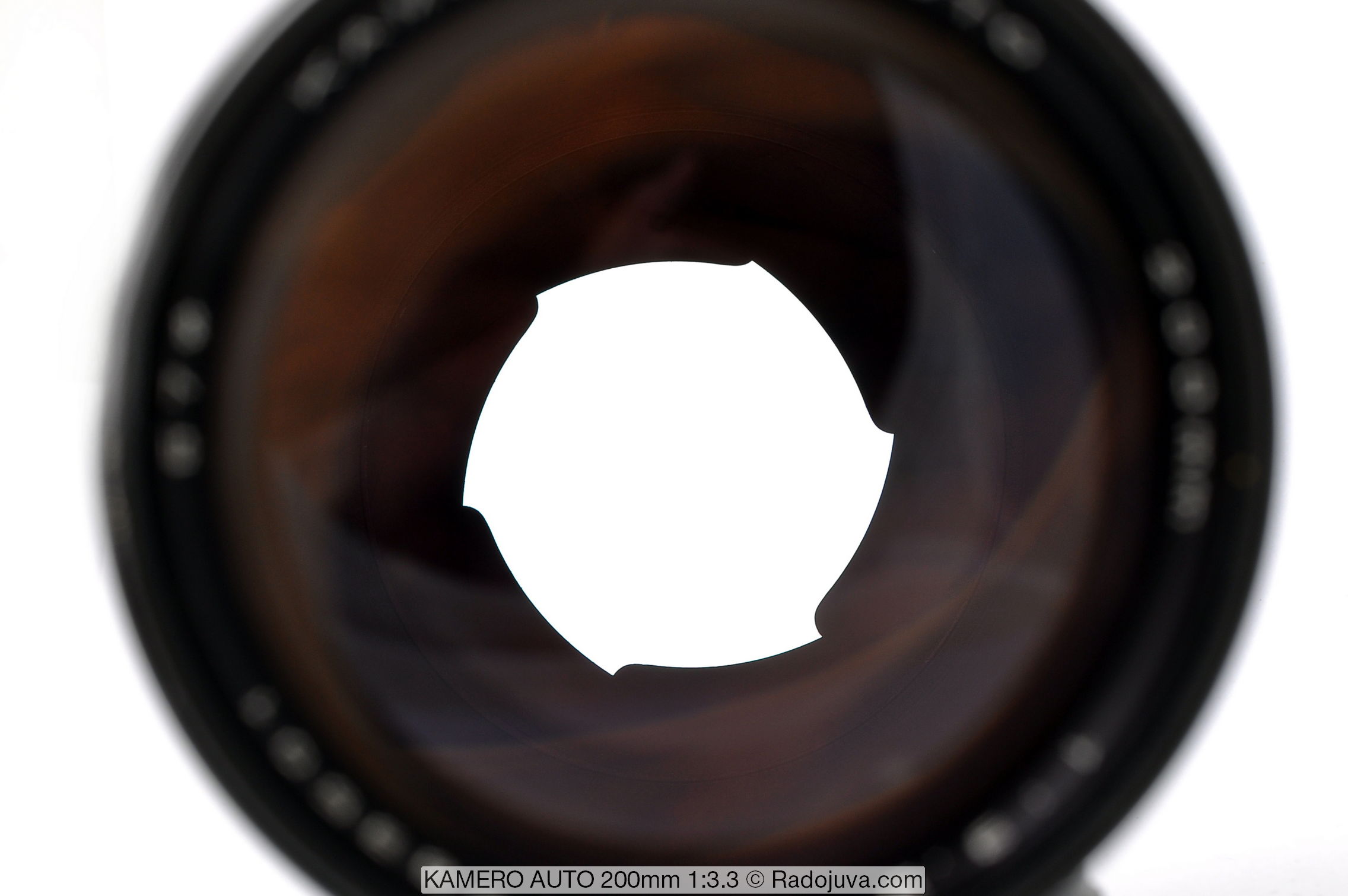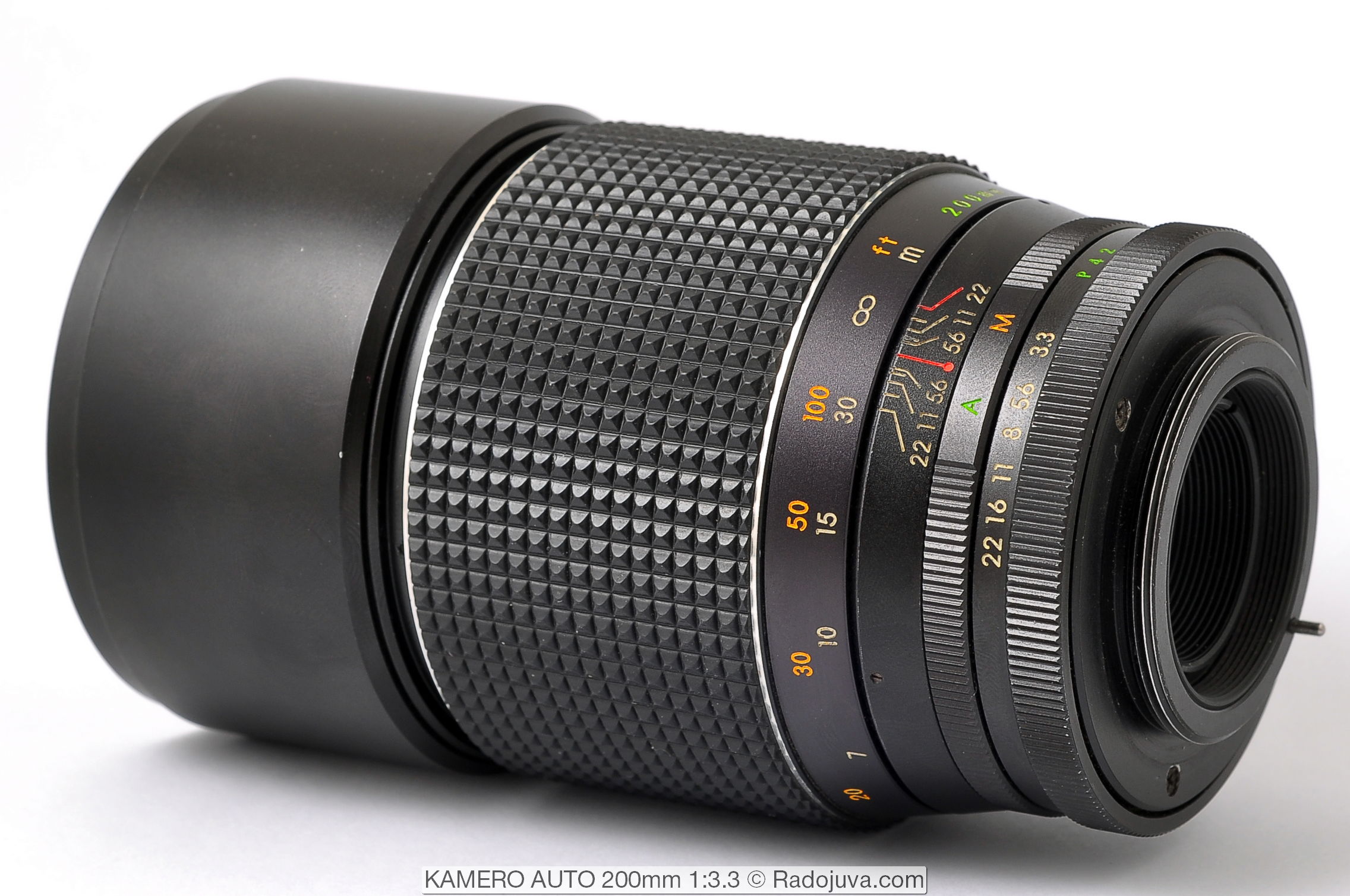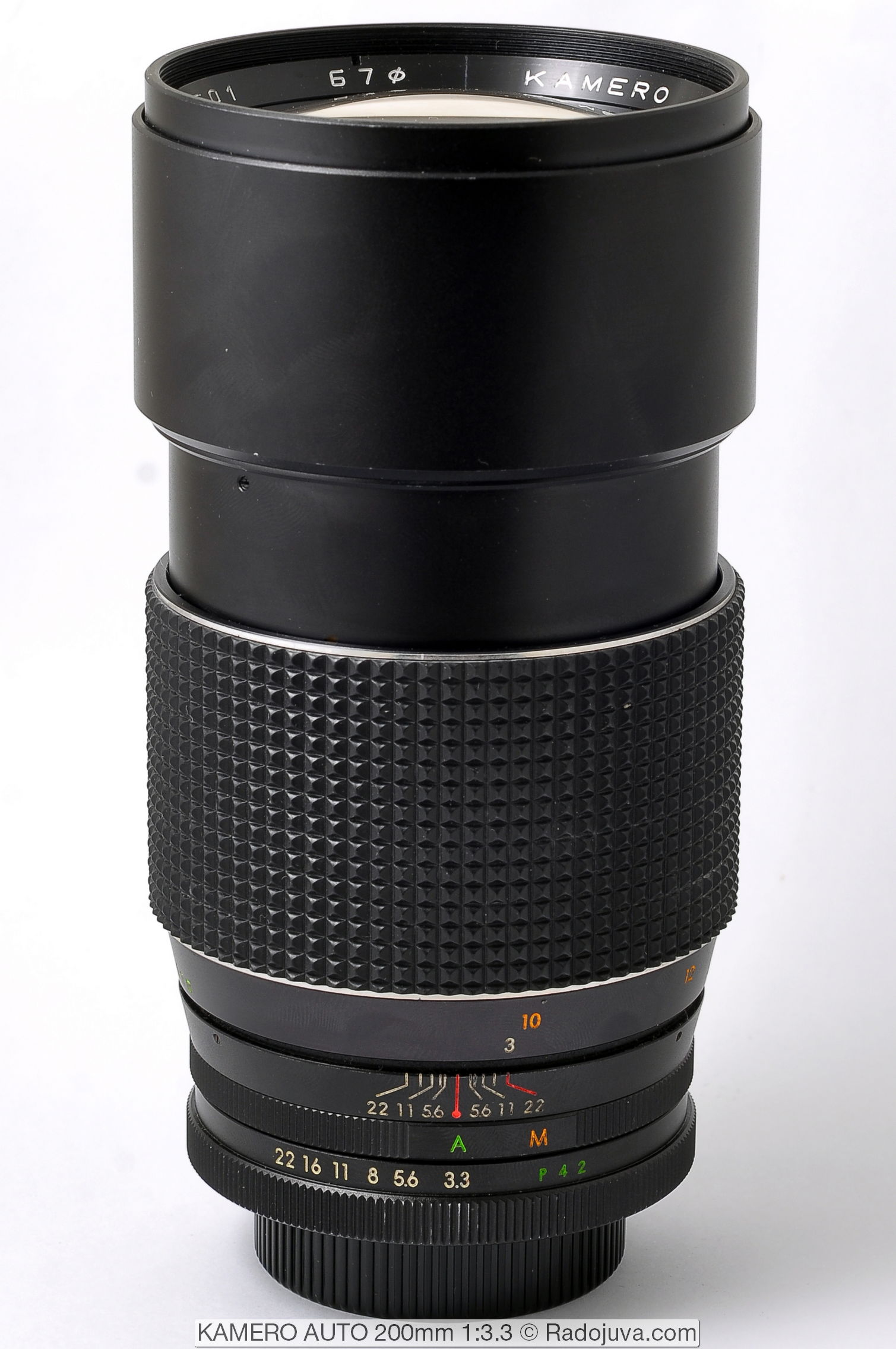What Cameras Use A Kamero Lens?
Co-ordinate provided past KAMERO Automobile 200mm 1: iii.3 lens; many thanks to Ilya Kostenko (photo flea market of the city of Dnepropetrovsk).

KAMERO AUTO 200mm 1: 3.iii
This lens is as well known every bit Makinon, Porst, Magnon, Revue, Promaster, CPC Phase 2, Chinon, Revuenon, Olympia, Kitstar, Helios, Presenta, Rexatar, Prinzflex (the list may be incomplete or inaccurate) and was produced with mounts for dissimilar mirror systems. Thanks to the subscriber from Radozhiva groups in VK per list of names.
Outwardly and to the touch, it is solidly assembled, with an old-school design and a built-in telescopic retractable metal hood. The hood in the active position does not hang.
The focus ring has a rubberized insert, broad and comfy, rotates approximately 270 degrees (3/four of a full revolution). The ride is very pleasant. During focusing, the front retractable body does not rotate. Focusing occurs by moving the unabridged lens block. The minimum focusing altitude is equally much every bit 3 meters, which interferes with the user-friendly use of the lens when shooting some small objects.
The diaphragm consists of simply vi petals... There are notches at f / 5.6 and between f / 3.three and f / 5.6. The aperture ring has f / 3.three, five.half-dozen, eight, 11, xvi, 22 with one intermediate value between f / three.3 and f / 5.6 (well-nigh likely f / 4). The diaphragm band has a green 'P42' lettering (nearly likely an M42 thread marker). DOF calibration for F / 5.half-dozen, 8 (implicit), 11, 16 (implicit) and F / 22 + notch for infrared operation (has a solid offset). At that place is an additional 'A / M' aperture fashion switch band, this ring is as well close to the discontinuity ring and can be accidentally defenseless.
KAMERO Automobile 200mm 1: 3.iii from the review uses the M42 fit thread and is easy to suit with the appropriate adapters to a large number of modern cameras.

KAMERO AUTO 200mm 1: 3.3
Appearance
For different brands, there were minor modifications to this lens. The changes concerned the color of the inscriptions and the value of the minimum aperture.
Sample Photos
The lens is weak optically. First of all, he gives strong software due to spherical aberrations on F / 3.3. A more or less acceptable picture is obtained starting with F / 5.vi. The lens has very low contrast and resistance to flare, specially to side light and the lens hood does not assist much. There are tangible chromatic aberration.
I used this lens on the camera Sony Alpha NEX-3N using an adapter M42-NEX. Convert source RAW files with original Sony Imaging Border Viewer utility; sharpness is set to maximum (+3). It was painfully difficult for me to selection upward more or less acceptable pictures from this lens. The yield of successful frames is disastrously pocket-sized, this is due both to poor eyes and the difficulty of shooting at 200 mm of focal length and a light crop camera without a stabilizer.
JPEG source photos can be downloaded at this link. RAW accidentally lost.
Full frame camera Nikon D700 I used KAMERO AUTO 200mm 1: 3.three with a lensless adapter M42-Nikon F, with such an adapter, the far focus limit is approximately 20 meters (you lot can shoot portraits to the full pinnacle). Subsequently the first few frames at F / 3.3, at that place is no want to use this lens, so near of the pictures were taken at F / 5.6-11
RAW source photos ('.NEF') tin be downloaded at this link.

KAMERO AUTO 200mm 1: three.3
My experience
Nice and impressive appearance, congenital-in hood and the inscription 'LENS MADE IN Japan' - that's all its advantages. To get more than or less adequate paradigm quality, you should employ f / 5.6 and below. At f / five.half-dozen and nether certain weather condition with the KAMERO AUTO 200mm one: 3.3, you tin can get pretty nice pictures.
Perhaps the combination of a large focal length with a large aperture, because 200 / 3.3 is most 200 / 2.8 (theoretically, the difference is a third of the stop). In practice, the real aperture, expressed in T-steps, approaches T / iv at a value of F / 3.three. And visually the rear lens is small plenty for a fast lens.
I honey sometime know-how lenses, among them interesting specimens sometimes come across. Unfortunately, this fourth dimension a miracle did not happen.
Comments on this postal service practise not require registration. Anyone can leave a annotate. A wide multifariousness of photographic equipment can be found on AliExpress, The Amazon и B&H Photo.
Material prepared Arkady Shapoval... Look for me on Youtube | Facebook | Instagram | Twitter.
Source: https://radojuva.com/en/2019/07/kamero-auto-200mm-3-3/
Posted by: yusomearesove.blogspot.com

0 Response to "What Cameras Use A Kamero Lens?"
Post a Comment